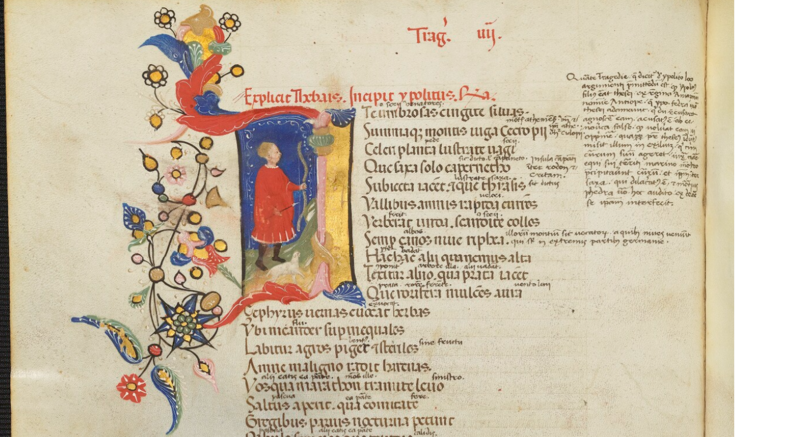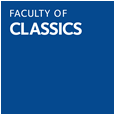Canons of Latinity
Canons of Latinity, 1150 to the present

Oxford, Bodleian Library MS. Auct. F.1.14 f.45v: the beginning of Seneca the Younger's Phaedra in a fifteenth-century manuscript written for Matthias Corvinus and subsequently owned by Suleiman the Magnificent. © Bodleian Libraries, University of Oxford
Canons of Latinity, 1150 to the present is an international network that grew out of a successful bilateral exchange between Oxford and Bonn; it aims to interrogate Latin literature and its development and transformation in the longue durée. We are motivated by a recognition that the traditional categorisations of Classical, Late Antique, Medieval, and Neo-Latin often conceal or obscure the fact that, although literary Latin has evolved over time under the changing influences of different milieux, it has nevertheless remained fundamentally stable down to the present day, while being governed by shifting sets of norms and transformed by wider literary and cultural developments. We do not intend to do away with the long-standing chronological divisions of Latin literature that are differently inflected in distinct scholarly traditions and, in some countries, even academic structures, but rather to complement them by exploring the continuities of, influences on, and variations in a Latinity that stretches from antiquity to the present and thus transcends artificial periodisation.
By approaching Latin literatures from the perspective of Langzeitlatinistik, we are able to explore afresh, and bring new light to bear on, questions of long-standing interest to scholars of Latinate intellectual and literary cultures. We begin from the great efflorescence of Latinity in the so-called twelfth-century Renaissance – from when a wide range of examples of classicising and non-classicising Latin literatures survive – and continue through the writings of the early modern period to the present. The encompassing of such a chronological span is intended to facilitate the interrogation of the traditional division between Medieval and Early Modern Latin, while also attending to the continued use of Latin through to the twenty-first century, even after it had ceased, around 1800, to function as a mainstream international literary language in Europe in particular.
Among the key features of Latin literary works that the network intends to consider are:
– canon formation in Latin and the changing status of Classical and Medieval authors in later literatures;
– the changing periodisation of Latin;
– the rediscovery of Classical and Medieval Latin writings and their reception in later literatures;
– the variety and relative prestige of different Latin styles at different times and in different places;
– continuities and changes in genre and the interplay between genres;
– the changing popularity of Classical, Late Antique, Early Christian, and Medieval Latin in later literatures;
– interaction of Latin literature with religion and confessional identities;
– interaction of Latin literature with national and vernacular traditions;
– geographical and regional variations in literary traditions;
– interaction of Latin literature with political change;
– the role of Latin in colonialism;
– the role of women in the production of Latin literature.
The inaugural meeting of the network takes place in the spring of 2026 in Oxford on the theme of Latin responses to Horatian lyric, 1150 to the present.
Steering committee:
Carmen Cardelle de Hartmann (Zürich); Tristan Franklinos (Oxford); Stephen Harrison (Oxford); Marc Laureys (Bonn); Marianne Pade (Aarhus); Florian Schaffenrath (Innsbruck); Raf Van Rooy (Leuven).
Advisory board:
Joaquín Pascual Barea (Cádiz); Hélène Casanova-Robin (Paris); Ingrid De Smet (Warwick); Thomas Haye (Göttingen); Neven Jovanović (Zagreb); Han Lamers (Oslo); Gesine Manuwald (London); Gernot Michael Müller (Bonn); Peter Orth (Cologne); Christoph Pieper (Leiden); Valerio Sanzotta (Rome); Irina Tautschnig (York); Grażyna Urban-Godziek (Kraków); Kristi Viiding (Tallinn).



